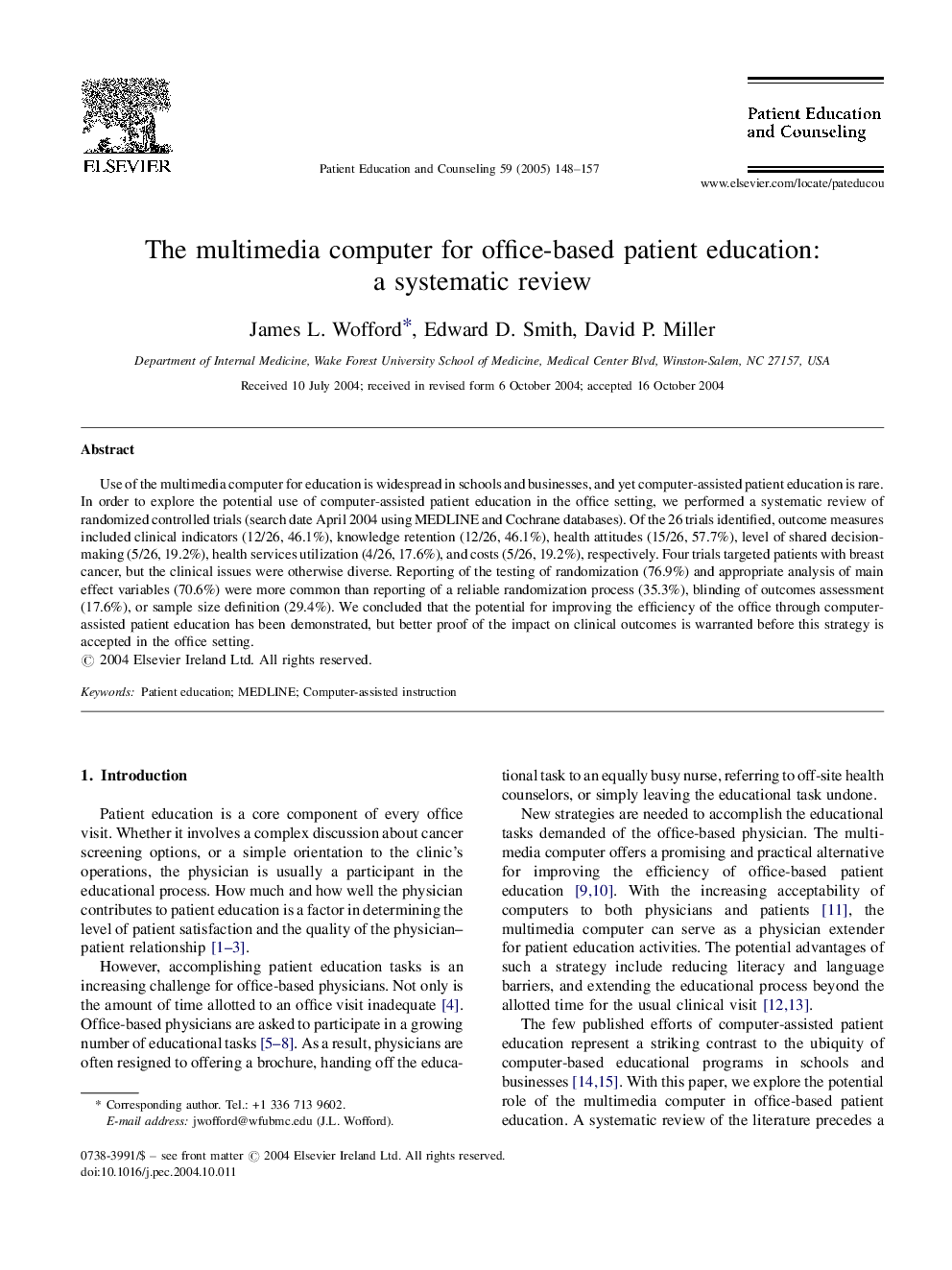| Article ID | Journal | Published Year | Pages | File Type |
|---|---|---|---|---|
| 9301666 | Patient Education and Counseling | 2005 | 10 Pages |
Abstract
Use of the multimedia computer for education is widespread in schools and businesses, and yet computer-assisted patient education is rare. In order to explore the potential use of computer-assisted patient education in the office setting, we performed a systematic review of randomized controlled trials (search date April 2004 using MEDLINE and Cochrane databases). Of the 26 trials identified, outcome measures included clinical indicators (12/26, 46.1%), knowledge retention (12/26, 46.1%), health attitudes (15/26, 57.7%), level of shared decision-making (5/26, 19.2%), health services utilization (4/26, 17.6%), and costs (5/26, 19.2%), respectively. Four trials targeted patients with breast cancer, but the clinical issues were otherwise diverse. Reporting of the testing of randomization (76.9%) and appropriate analysis of main effect variables (70.6%) were more common than reporting of a reliable randomization process (35.3%), blinding of outcomes assessment (17.6%), or sample size definition (29.4%). We concluded that the potential for improving the efficiency of the office through computer-assisted patient education has been demonstrated, but better proof of the impact on clinical outcomes is warranted before this strategy is accepted in the office setting.
Related Topics
Health Sciences
Medicine and Dentistry
Medicine and Dentistry (General)
Authors
James L. Wofford, Edward D. Smith, David P. Miller,
